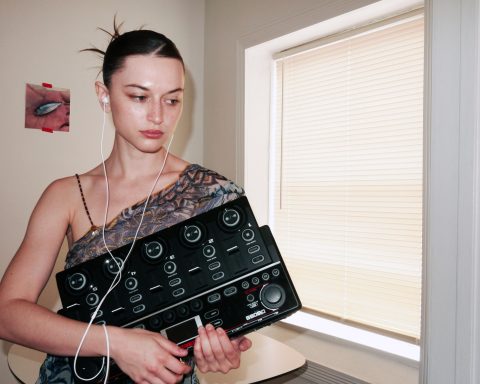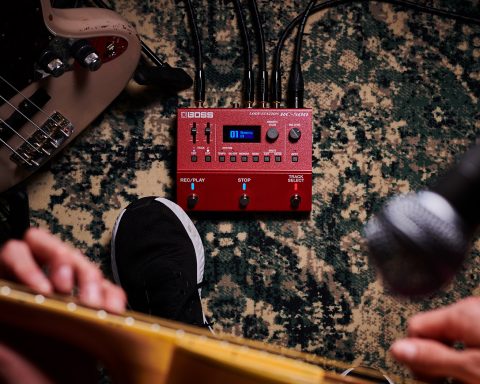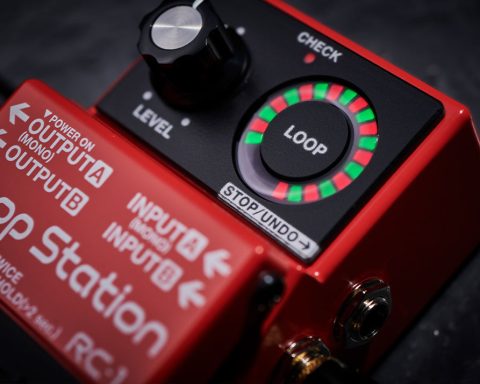Nothing sparks more creativity than plugging into a BOSS Loop Station—the instant rush of hearing your playing repeated back, adding layers, and playing over them turns every casual riff into a song idea. But the Loop Station is more than just an inspiration machine; it’s a fantastic way to unlock your musical abilities and make you a better musician. Here’s how to maximize this powerful tool.
1. Boost Your Solo Performances
Feeling like your solo gigs aren’t capturing the audience? With a Loop Station, your solo shows will sound like a full band. From looping chord progressions and layering melodies, you’re free to focus on singing and lead playing. It’s your complete band in a box, and there’s no need to split the pay!
Suggested Looper: RC-5

2. Build Your Guitar Army
Want to create complex and dynamic guitar (or keyboard) sounds live? One of the most inspiring parts of a looper is layering different guitar parts on top of each other, creating a unique and rich texture for your song. Is your distorted tone lacking clarity? Loop a clean track over it for more dynamics and texture. Not only that, you can add rhythm, harmony, and melody layers and have a completed song without the hassle of recording software, and you can do it on the fly.
Suggested Looper: RC-1

3. Make Practice Fun
Do you feel like your solo practice could be more varied and exciting? Do you miss the feeling of playing with a band? You can work on your timing, improvisation, and expression by looping a chord progression and soloing over it even when the band has gone home. Not only that, looping a riff or tricky section and playing along with it will help you nail down the notes perfectly.
Suggested Looper: RC-5
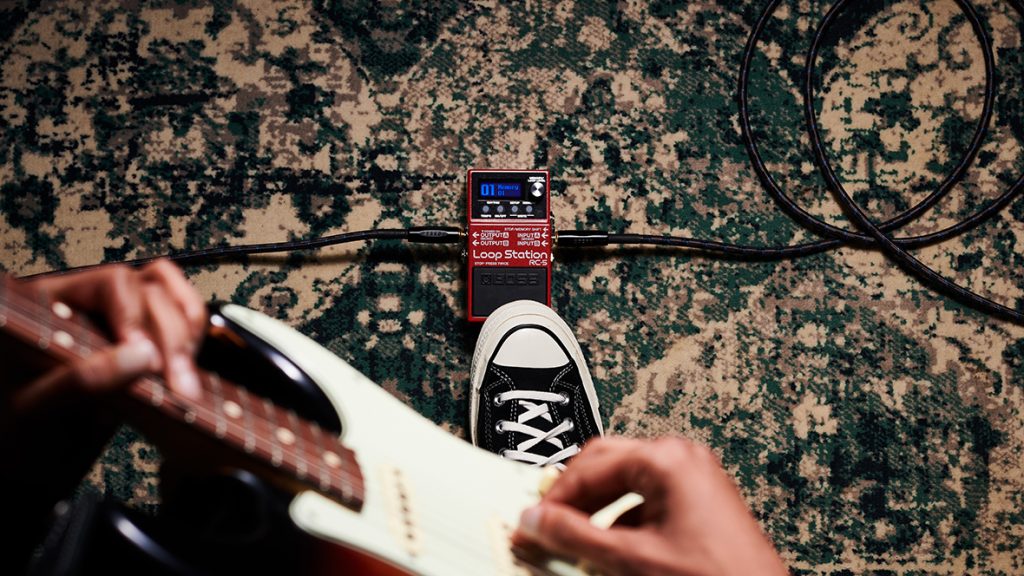
4. Create a Lush Soundscape
Want to build a wall of sound with just one instrument? With a Loop Station and your guitar (or bass or keyboard), you can create an entire world of sound. By layering parts, create a rich sonic tapestry. From reverb-drenched notes to fuzzed-out leads and endless delays, you can captivate your audience and create aural experiences by yourself.
Suggested Looper: RC-10R
"From reverb-drenched notes to fuzzed-out leads and endless delays, you can captivate your audience and create aural experiences by yourself."
5. Never Lose a Song Idea
Have you had a brilliant song idea vanish before you could record it? When crafting a song, you have to get that idea down fast before it slips away. A Loop Station is a quick way to capture that magic. Even better, once you’ve got the main idea, it’s easy to refine it by adding different chord progressions, trying alternate melodies, and refining the song’s structure. It makes it easy to start with a riff and finish with a fully developed track sketch.
Suggested Looper: RC-10R
6. Bust Out of a Creative Rut
Tired of writer’s block? We’ve all been there—you sit down to compose, and nothing comes to mind. Instead of getting discouraged, plug into a Loop Station and start playing. Hearing your ideas play back to you can inspire new sounds, try different effects, and create different rhythms. You can even do this live and create a totally unique and spontaneous creative experience for your audience.
Suggested Looper: RC-5
"By adding backing tracks, you’ll create a more dynamic and engaging performance."
7. Band in the Bag
Want to add a full band sound for solo gigs? As a solo artist, you don’t need to settle for one instrument sound. By adding backing tracks, you’ll create a more dynamic and engaging performance. Adding a bass line, keyboard melodies, and a drum track is easy. You can showcase your lead playing over your looped rhythm tracks.
Suggested Looper: RC-500
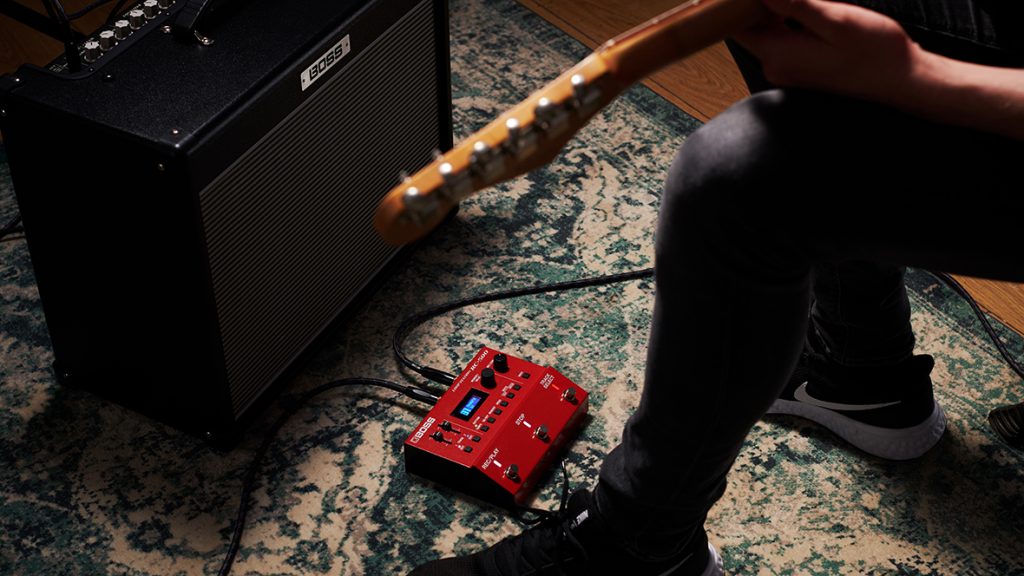
8. Create a Wall of Sound
Want to make your band sound massive? Looping is not just for solo performances. You can create a completely unique and dynamic sound by syncing your loops with other musicians and keeping your rhythm and timing rock solid. By weaving sonic textures together, you can create a sound that used to be only possible in the studio. For example, loop the layered guitar riffs to hold the song together and bring your dynamic and spontaneous lead playing out front.
Suggested Looper: RC-600
"By looping a riff or chord progression, students can develop a better feel of timing and rhythm without the artificial feel of a metronome."
9. Teach in an Organic Way
Want to give your students the feeling of playing with a band? When teaching students (or yourself), one of the biggest challenges is understanding how to play in time and with a band. By looping a riff or chord progression, students can develop a better feel of timing and rhythm without the artificial feel of a metronome. It also makes it much easier for them to practice sections with a perfect model to follow.
Suggested Looper: RC-5
If you want to learn a new instrument or incorporate a new instrument into your sound, a Loop Station makes it easy. If you’re a guitar player, you can loop some simple keys and bass lines to build a backing track to fill out the song. Then, refine these sketches as you learn or share them with your bandmates to give them direction.
Suggested Looper: RC-5

10. Expand your Sonic Signature
Want to experiment without changing your style? Don’t limit your creativity. Even if you’re a straight-ahead, no-frills player, looping will completely change how you think and play. From doubling tracks to finding new melodies to improving your improvisation, looping will ignite the creative spark of your songcraft.
Suggested Looper: RC-1
"A Loop Station is more than just a pedal—it's a powerful tool for unlocking your creativity."
More Than a Pedal
A Loop Station is more than just a pedal—it’s a powerful tool for unlocking your creativity. From adding depth and richness to your solo and band performances to expanding your songwriting and turning your solo jams into productive practices, a Loop Station is an essential piece of gear for becoming a better musician.



